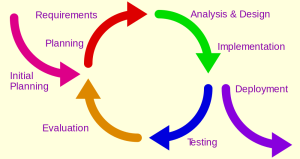How Does Iterative Design Help
The process of iterative design is one of the key components that help in managing risks and uncertainties. This is because with each iteration, the final product gets closer and closer to what was originally envisioned. This allows for more time to make changes, which may not have been possible if the entire project was designed at once.
This approach helps in creating a high-quality product while keeping costs low. This is because the design process is broken into smaller subparts and each part is designed with a specific purpose in mind. This allows for the creation of a prototype that can be tested and evaluated. As each iteration is completed, the team can learn from the results and apply those lessons to the next phase of design.

Iterative design is a popular choice for software development and other IT projects. However, it can also be used in other industries. For example, many construction and architectural projects are not designed iteratively. Instead, they are planned in advance, constructed and then reviewed for safety and maintenance purposes. This method of working tends to be more expensive than iterative design, which allows for a faster response to changing needs and requirements.
How Does Iterative Design Help in Managing Risks and Uncertainties?
Despite its benefits, iterative design can be difficult to implement in large projects. Teams tend to become restless and want to continue tweaking a design even after it has been vetted. The key to success is for the team to understand that iterating too much can be harmful to the project. Teams should be able to set metrics and determine when it is best to stop the iteration cycle.
Another challenge is the risk of scope creep. It is important to keep iterations focused on one issue at a time so that the design can be tested and evaluated for effectiveness. Otherwise, the team will be distracted and it will be difficult to measure the impact of each iteration on the overall design project.
A key benefit of iterative design is that it is a great way to gather valuable user feedback. This feedback can help in identifying what features are most effective and which ones need improvement. It can also prevent a design from going too far down the wrong path, which can save a lot of time in the long run.
Another advantage of iterative design is that it can be used at any stage of the project. It is more cost-effective, though, if it is implemented earlier in the process when the product is still being developed. This method of testing and evaluation allows for more time to make adjustments, which can improve the quality of a product and ensure that it will meet market demand. For example, a manufacturer may decide to make one change to an existing product. It can then test the new version against the older model to see how the change affects the customer experience. This will allow the company to make necessary adjustments before releasing the product into the market.